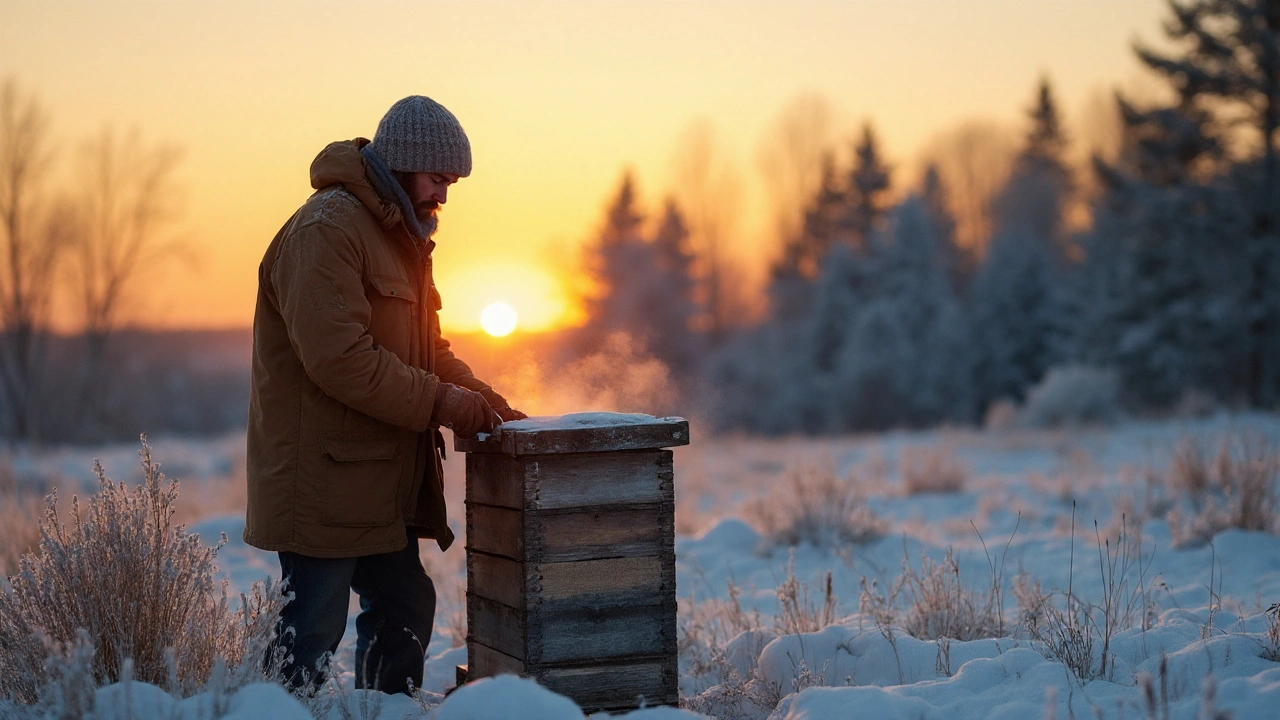Winter Beekeeping: Essential Tips for a Healthy Hive
When working with winter beekeeping, the practice of managing honeybee colonies during the cold season to ensure their survival and productivity. Also known as cold‑season beekeeping, it requires a blend of preparation, monitoring, and timely interventions. In the world of beekeeping, winter beekeeping is not just about surviving the chill; it’s about setting the stage for a strong spring swarm.
One of the first pillars of successful winter beekeeping is hive insulation, adding material or structural changes to keep the hive’s interior temperature stable. Proper hive insulation reduces temperature stress on bees (Winter beekeeping encompasses hive insulation) and cuts down on the energy they spend shivering to stay warm. Common methods include wrapping boxes with foam, using insulated covers, or placing hives in sheltered locations. The goal is a steady 45‑50°F (7‑10°C) inside the hive, which lets the colony conserve honey for essential metabolic needs.
Equally important is bee health, the overall condition of the colony, including disease resistance and strength of the queen. A healthy colony can better regulate its temperature and resist winter losses. Regular checks in late summer and early fall to assess brood patterns, queen vitality, and signs of disease set the foundation. When the queens are strong and the workforce is robust, the colony can cluster tightly and generate enough heat without depleting stores.
Key Practices for Successful Winter Beekeeping
Another critical factor is supplemental feeding, providing additional carbohydrates and proteins when natural stores run low. Supplemental feeding supports bee health during winter (Supplemental feeding supports bee health during winter) and can be delivered as sugar syrup, fondant, or patties placed above the brood area. The timing matters: feed in early autumn before the first hard freeze, and re‑check stores mid‑winter if the colony is struggling. Avoid over‑feeding; excess sugar can ferment and attract pests.
Winter also brings the heightened risk of varroa control, managing the mite parasite that weakens bees and spreads disease. Effective varroa control influences colony survival in cold months (Varroa control influences colony survival in cold months). Integrated pest management—using screened bottom boards, drone brood removal, and, if needed, miticides applied before winter—keeps mite counts low. A colony with fewer mites conserves more honey and maintains stronger immune responses.
Temperature monitoring, moisture control, and ventilation are the supporting threads that tie these practices together. A simple thermometer placed at the hive’s head gives a quick read on internal temperature, while a hygrometer helps track humidity. Too much moisture leads to mold and weakens bees, so ensuring a small vent hole that closes when it’s too cold balances airflow. These small steps prevent condensation buildup, which can be fatal in dense clusters.
Finally, plan for the spring transition. As temperatures rise, gradually remove insulation, increase ventilation, and add fresh supers for nectar flow. Watching the colony’s behavior as it awakens will tell you if the winter preparations paid off. If you’ve followed the steps above—insulating the hive, maintaining bee health, feeding wisely, and managing varroa—you’ll likely see a vigorous colony ready to capitalize on early blooms.
Below you’ll find a curated selection of articles that dive deeper into each of these topics, offering step‑by‑step guides, product reviews, and expert tips to help you master winter beekeeping. Whether you’re a hobbyist or a seasoned apiary manager, the resources ahead will give you actionable insights to keep your bees thriving through the cold season.
Winter Beekeeping: How to Manage Hives in Cold Months
Learn practical steps to keep your bee colonies healthy through winter. From insulating hives to monitoring temperature, this guide covers everything a beekeeper needs for successful cold‑weather management.

